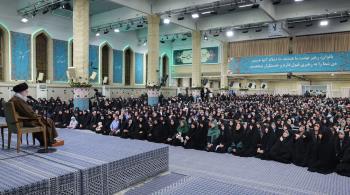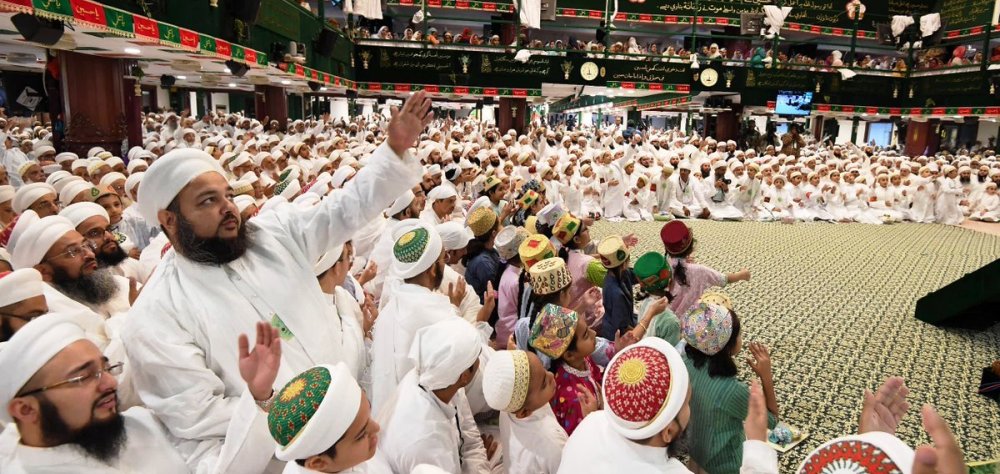Alwaght- Though India is known for its being the land of sadhus and elephants, this 72-nation country is home to a lot of religions, with population of each religion being equal to population of several countries. Despite the fact that 80 percent of the Indians are Hindus, a considerable number are Muslims who account for the second largest community of this non-Muslim country.
In recent years, Indian government set up many bans and restrictions for Muslims and especially the Shiites, but New Delhi cannot simply close its eyes on the beliefs, thoughts, and faith of this large community. In this regard, the Indian government has recently reached diplomatic agreements with the Iraqi government which can be in favor of the Shiites. According to Iraqi media, New Delhi and Baghdad agreed to strength security relations based on which visit of Iraq by Indian nationals for worship of the Iraqi Shiite religious sites will be facilitated.
The deal was struck during visit to India of the Iraqi National Security Advisor Qasim Al-Araji on Friday. The two countries emphasized on strengthening security relations, too. An important meeting was held between the two sides, and they exchanged views on various fields that would serve the interests of both countries, according to media reports.
Indian media further reported that the two countries agreed to boost defense cooperation and security relations and fight terrorism. Highlighting the “historical” relationship between the two nations and that annually a large number of Indian pilgrims visit the holy Iraqi cities of Najaf and Karbala, media outlets held that Al-Araji’s visit will pave the way for bolstering partnership in security, economy, and religious tourism especially for the Shiites.
Considerable Shiite population in India
The agreement to facilitate visit to Iraq of Shiite Indians comes as a large number of Shiite Muslims live in Indian cities. Indian Shiites constitute a major part of the Muslim population in this country and according to estimates, they comprise about 30-35 percent of the total population of 230 million Muslims in this country, that is, their population is more than 70 million people. There are many cities and villages in the north and south of India where a significant number of population is Shiites.
Given this fact, it can be concluded that India’s Shiite population is bigger than those of all Muslim countries, even Iran, something demonstrating that the presence of Muslims in the Indian territories for centuries has had deep influence on the Islamic culture and civilization. The ‘Sayyids of Gujarat’ also known as ‘Mir’ with an approximate population of 25,000 people form a part of the South Asian Sayyid community, who are living in India and Pakistan. By estimation, India will be the largest country in the world in terms of population by 2030, and subsequently the population of Muslims and Shiites will also increase. Only in the last decade, the Muslim population of India increase xml by 50 million, and in the future, this number will grow significantly and India may unseat Indonesia as the country with the largest Muslim population.
The historical root of the spread of Shiite in India is considered to be the migration of many Iranians to India following the Mongol invasion of Central Asia, Iran, Afghanistan and Pakistan in early 13th century, and some historical evidence about the inclination of some Indian rulers to Shiite strengthens this claim. Lucknow, a city in northern India that is considered as one of the important cities of India, is the current bastion of the Twelver Shiites in India. The city is home to important Shiite worship places like mosques and Hussainiyahs. Hyderabad, Deccan, and Mysuru are also cities with major Shiite communities.
Although there is no precise figure of the Shiites in India, according to some reports, a majority of the Shiites are Twelver, Zaydi, and Dawoodi Bohra. Shiite parties, including Muslim Unity, Shiite Sharia Association, Shiite Association, Association of Seculars and Preachers, are active in India and run various educational centers and special schools. The Shiites of India suffer from many economic troubles and receive less religious information despite activities of various centers. Politically, they have no special position, but due to the existing power equations, their vote in the general elections counts.
Solidarity with resistance
Every year, the Shiites in India show their love and passion for Imam Hussein, the grandson of Prophet Muhammad, in the mourning ceremonies in Muharram. In the Shiite-majority areas of India, special places have been built which are known as ‘Imambareh’, equal to Hussainiyah, where mourning ceremonies are held. They hold Muharram rituals like other Shiites, especially in the day of Ashura, namely the tenth day of Muharram in which Imam Hussein was martyred in his revolt for freedom and against oppression.
Shiites of India also have a strong presence in Arbaeen marches that mark fortieth day of Imam Hussein martyrdom. last year, more than 5,000 Shiites and lovers of Imam Hussain from India visited Iraq. They provide services in service stations known as ‘mawkab’ to the pilgrims along the marching route, showing that the farther the distance from the land of Karbala, the greater the affection for Imam Hussein.
Indian Shiites gain their travel authorization for Arbaeen marches with difficulty. However, the recent agreement can allow larger population of Shiites to travel to the holy Iraqi cities. Indian Shiite leaders have repeatedly asked the government to negotiate with the Iraqi authorities in this regard and facilitate travels to Iraq. With the recent agreement with Baghdad, a progress appears to have been made. If Indian Shiites are granted permission for Iraq travel, due to their large population, the Arbaeen ceremony will be held even more magnificently.
The Shiites of India have preserved their religious closeness to other Shiites despite their long distance from the Muslim countries and life in a non-Muslim country. Whenever Shiites of other places suffer, they voice solidarity with them. Their stance against Yemen war is a good example. In March 2015 and a week after start of the Saudi-led coalition’s invasion of Yemen, they arranged demonstrations in solidarity with the Yemenis. They protested airstrikes on Yemeni cities and called for end of the deadly military campaign.
They also always mark Quds Day like other Muslims in support of the Palestinians and in condemnation of Israeli crimes while they suffer from pressures and restrictions as right-wing government of India has close ties with Israel. Also, when in August 2019, Nigeria Shiite leader Sheikh Ibrahim Zakzaky was sent to India after prison for medical treatment, Hydari Association, a Shiite organization, proposed paying his hospital bills. These measures very well indicate that the Shiites of India provide a ground for further expansion of resistance culture influence in the Muslim world.



























